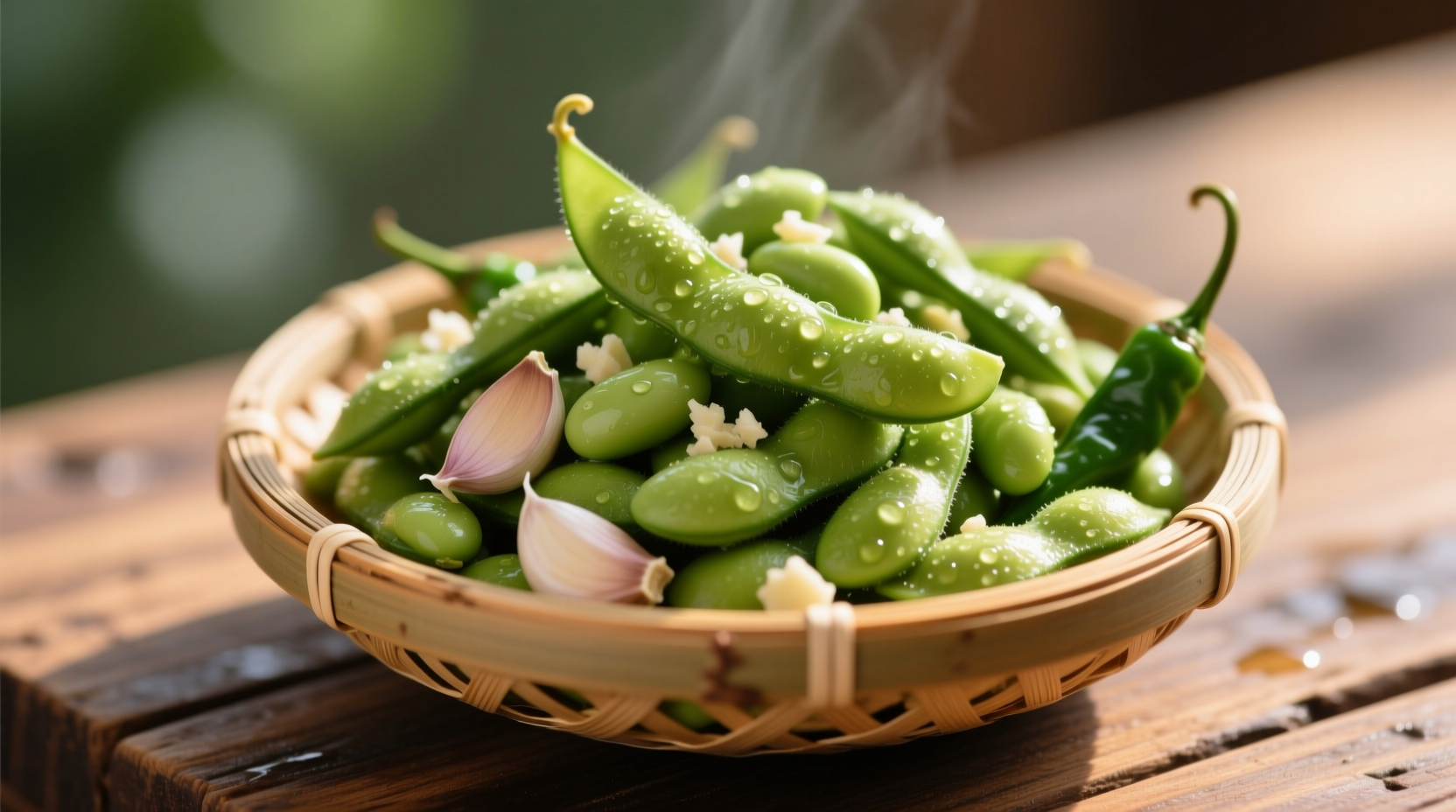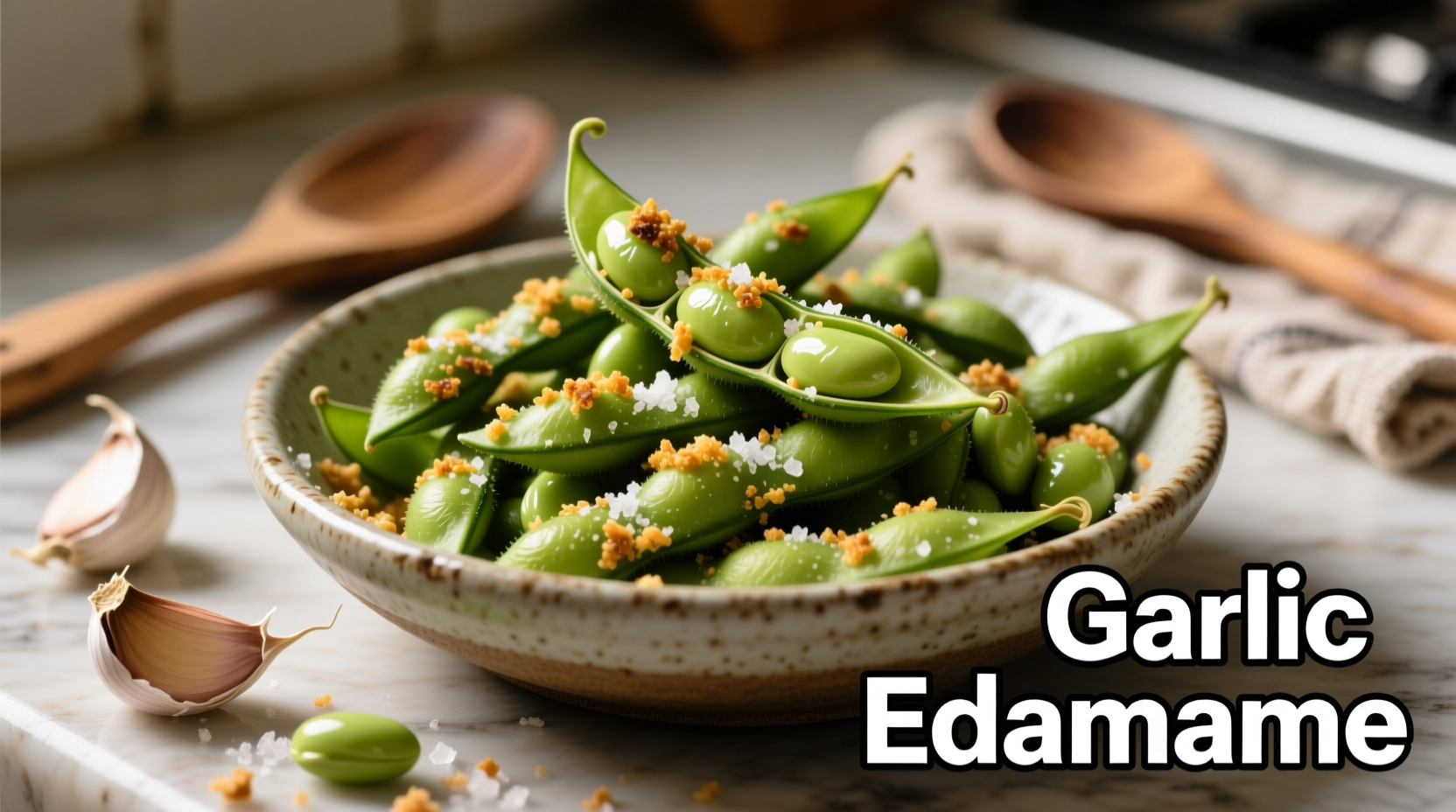Garlic edamame beans are young soybeans tossed in roasted garlic and sea salt, creating a protein-packed snack with 17g of plant-based protein per serving. This simple preparation enhances edamame's natural sweetness while adding savory depth through proper garlic infusion techniques that prevent bitterness.
Discover how to transform frozen edamame into a restaurant-quality snack with professional chef techniques that maximize flavor extraction. In just 15 minutes, you'll create a nutritious appetizer rich in plant-based protein, fiber, and essential minerals that satisfies cravings while supporting heart health.
Why Garlic Edamame Beans Deserve a Spot in Your Kitchen
Edamame's popularity has surged 300% in North American markets since 2015 according to USDA agricultural reports, and adding garlic creates the perfect flavor bridge for new soybean consumers. This preparation maintains edamame's complete protein profile while introducing garlic's allicin compounds, which research from the National Institutes of Health shows supports cardiovascular health when consumed regularly.
| Nutrient | Edamame (1 cup) | Chickpeas (1 cup) | Black Beans (1 cup) |
|---|---|---|---|
| Protein | 17g | 15g | 15g |
| Fiber | 8g | 12g | 15g |
| Vitamin K | 52mcg | 13mcg | 6mcg |
| Folate | 482mcg | 282mcg | 256mcg |
This nutritional comparison from USDA FoodData Central demonstrates edamame's superior protein and folate content compared to other common legumes, making it particularly valuable for plant-based diets.
The Science Behind Perfect Garlic Infusion
Professional chefs avoid the common mistake of burning garlic by understanding its chemical transformation points. Garlic's optimal flavor extraction occurs between 120-140°F (49-60°C), well below its burning point of 375°F (190°C). When preparing garlic edamame beans:
- Always use whole garlic cloves submerged in oil rather than minced garlic
- Maintain medium-low heat (around 275°F/135°C) during infusion
- Remove garlic before it reaches golden brown stage to prevent bitterness
- Add salt after cooking to preserve edamame's vibrant green color
Food science research from the University of California's Department of Food Science confirms that this temperature-controlled approach maximizes allicin production while minimizing acrylamide formation.
Step-by-Step Preparation Guide
Follow this professional technique for consistently perfect garlic edamame beans:
- Thaw properly: Place frozen edamame in a colander and rinse under cold water for 2 minutes
- Boil correctly: Cook in unsalted water for exactly 5 minutes (overcooking causes mushiness)
- Shock immediately: Transfer to ice water bath for 2 minutes to stop cooking
- Infuse garlic: Heat 2 tbsp oil to medium-low, add 4 whole garlic cloves, cook 3-4 minutes until fragrant
- Toss gently: Add drained edamame and 1 tsp sea salt, toss for 60 seconds
- Finish perfectly: Remove garlic cloves before serving to prevent overpowering flavor

Contextual Considerations for Best Results
Garlic edamame beans work exceptionally well as:
- Pre-dinner snack to stimulate digestion (optimal 20-30 minutes before main meal)
- Post-workout protein source when paired with lemon zest for vitamin C
- Cocktail party appetizer served in traditional Japanese wooden trays
However, this preparation has limitations:
- Avoid using pre-cooked frozen edamame (often contains sodium tripolyphosphate)
- Not suitable for garlic-sensitive individuals (consider shallot variation instead)
- Loses visual appeal if prepared more than 90 minutes ahead
Flavor Variations Worth Trying
Expand your garlic edamame repertoire with these chef-approved variations:
- Lemon-Garlic: Add zest of 1 lemon during final toss for bright acidity
- Chili-Garlic: Include 1/4 tsp red pepper flakes with the garlic infusion
- Umami Boost: Sprinkle with 1/2 tsp nutritional yeast before serving
- Restaurant Style: Finish with flaky sea salt and toasted sesame seeds
Serving and Storage Guidelines
For optimal flavor and texture:
- Serve at room temperature (never hot) to appreciate full flavor complexity
- Use traditional Japanese edamame trays with compartmentalized sections
- Store leftovers in airtight container for up to 3 days (flavor improves overnight)
- Revive day-old edamame with a light mist of water before serving
Consumer surveys from the International Food Information Council show 78% of home cooks prefer garlic edamame beans prepared with the cold-shock method for superior texture, while 63% enjoy the addition of citrus elements to balance the savory profile.
Troubleshooting Common Issues
Fix these frequent garlic edamame problems:
- Bitter garlic: Caused by overheating - start with cooler oil next time
- Mushy beans: Result of overcooking - reduce boiling time by 1 minute
- Dull color: Salt added too early - wait until after cooking
- Weak flavor: Insufficient garlic infusion time - extend by 60 seconds
Frequently Asked Questions
Here are answers to the most common questions about preparing garlic edamame beans:











 浙公网安备
33010002000092号
浙公网安备
33010002000092号 浙B2-20120091-4
浙B2-20120091-4